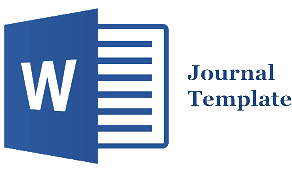REVITALISASI TULISAN ARAB-JAWI DALAM PEMBELAJARAN BAHASA DAN SASTRA INDONESIA DI SEKOLAH DASAR PROVINSI ACEH
Abstract
This study aims to revitalise the use of the Arab-Jawi script in the teaching of Indonesian Language and Literature at the primary school level, as part of efforts to preserve cultural heritage and strengthen literacy grounded in local wisdom. Arab-Jawi, an adaptation of the Arabic script to the phonological system of the Malay language, once served as a cornerstone of literacy among Malay-Muslim communities, including in Aceh. However, its role has been marginalized due to the dominance of the Latin alphabet. Employing a qualitative approach with an educational case study method, this research was conducted in three primary schools in Pidie Regency. Data were gathered through classroom observations, interviews, document analysis, and focus group discussions, and analysed thematically. Findings indicate that although Arab-Jawi is not yet formally included in the national curriculum, several teachers have taken the initiative to teach it using classical manuscripts, writing exercises, and cultural value discussions. Key challenges include limited learning resources and insufficient teacher training. Policy support, the development of instructional modules, teacher training programmer, and the digitisation of classical texts are essential to ensure the sustainability of this initiative.
Keywords
Full Text:
PDF (Bahasa Indonesia)References
Barizi, A. (2011). Pendidikan integratif: Akar tradisi dan integrasi keilmuan pendidikan Islam. UIN-Maliki Press.
http://repository.uin-malang.ac.id
Braginsky, V. I. (2001). On the Copy of Hamzah Fansuri's Epitaph Published by C. Guillot & L. Kalus. Archipel, 62(1), 21-33.
https://www.persee.fr/doc/arch_00448613_2001_num_62_1_3656
Djati, S. G. (tt.). Metodologi Penelitian Agama.
https://academia.edu
Iryani, E., Yusup, A., Jufri, S., Hasibuan, T. H., & Nurazzelena, N. (2024). Kurikulum Muatan Lokal Aksara Arab Melayu dalam Meningkatkan Literasi Melalui Kearifan Lokal di Kota Jambi. Arabi: Journal of Arabic Studies, 9(2), 199-210.
https://doi.org/10.24865/ajas.v9i2.921
Junaidi, J., & Wardani, V. (2024). Pembelajaran Menulis Tulisan Arab Melayu Menggunakan Aplikasi Lexilogos Arabic-Jawi. Jurnal Sosial Humaniora Sigli, 7(2).
https://doi.org/10.47647/jsh.v7i2.2860
Kurniati, K. (2023). Peran Perpustakaan dalam Melestarikan Warisan Budaya dan Sejarah Lokal. THE LIGHT: Journal of Librarianship and Information Science, 3(2), 102-114.
https://journal.uinmataram.ac.id
Mustofa, S. (2015). Meneguhkan Islam Nusantara untuk Islam Berkemajuan: Melacak Akar Epistemologis dan Historis Islam (di) Nusantara. Epistemé: Jurnal Pengembangan Ilmu Keislaman, 10(2), 405-434.
https://cappink11.wordpress.com
Risdiawati, D., & Nugroho, F. H. (2022). Menyingkap Religiositas Hikayat Hang Tuah Melalui Penggunaan Kosakata Islamiah: Kajian Manuskrip Sastra Pendidikan pada Era Merdeka Belajar. GHANCARAN: Jurnal Pendidikan Bahasa dan Sastra Indonesia, 230-251.
https://ejournal.iainmadura.ac.id/indx
Roza, E. (2017). Aksara Arab-Melayu di Nusantara dan Sumbangsihnya dalam Pengembangan Khazanah Intelektual. Jurnal Tsaqafah, 13(1), 177-204.
https://repository.uin-suska.ac.id
Sajidin, R. B., & Nufus, Z. (2024). Dari Tulisan Jawi ke Aksara Romawi: Benturan Ideologi dalam Perkembangan Serapan Bahasa Arab di Nusantara. Cordova Journal language and culture studies, 14(1), 96-116.
https://journal.uinmataram.ac.id
Sakti, T. A. (2011). Perkembangan dan Pelestarian Manuskrip Arab Melayu di Aceh. Citra Lekha, 15(2), 19-30.
https://ejournal.undip.ac.id/index
Susanti, N. D., Arkam, R., & Mustikasari, R. (2023). Strategi Pengembangan Keterampilan Membaca Permulaan dengan Media Roda Edukatif pada AUD. MENTARI: Jurnal Pendidikan Anak Usia Dini, 3(1).
https://jurnal.stkippgriponorogo.ac.id/index







